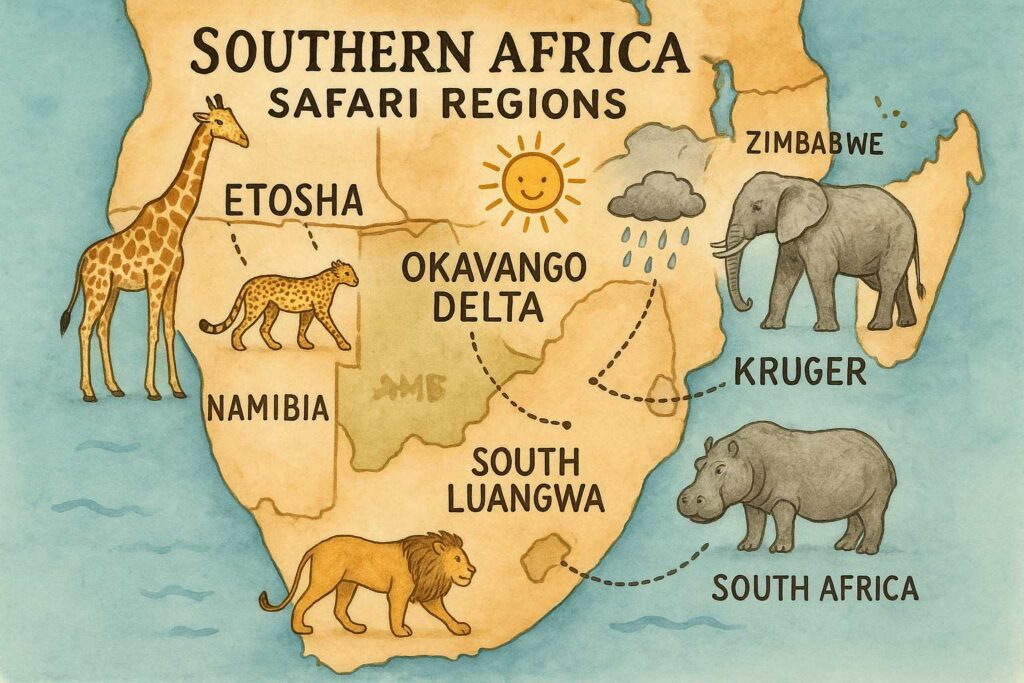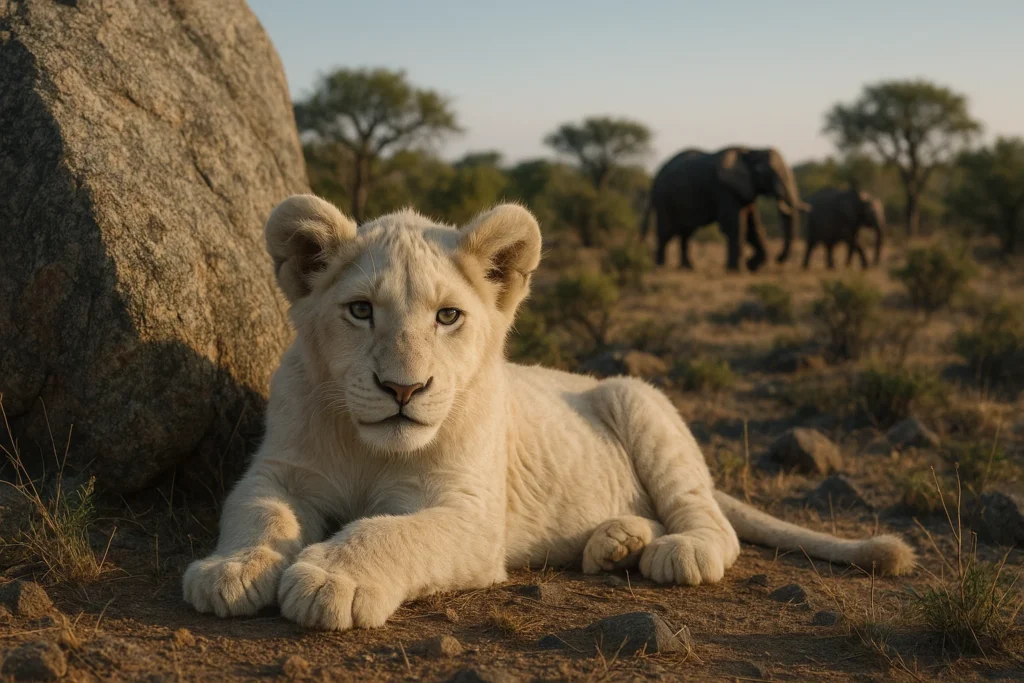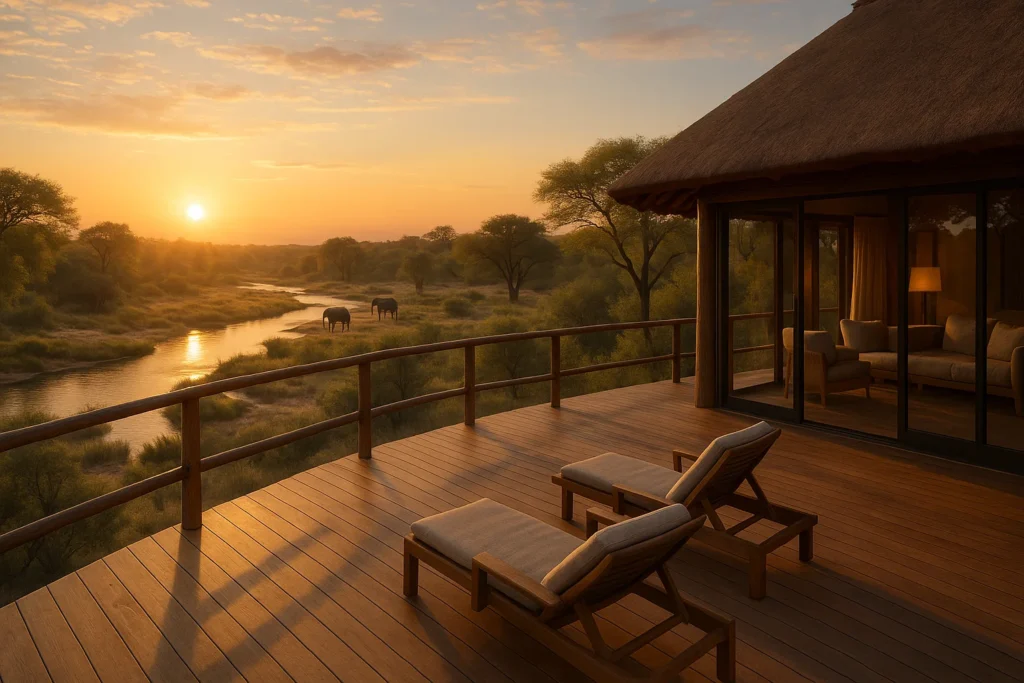When planning a safari in Southern Africa, timing matters. The region spans diverse climates, ecosystems, and seasonal wildlife movements. To help you choose the perfect safari window, we’ve broken down the best months to visit four top countries—South Africa, Botswana, Namibia, and Zambia—based on game viewing, weather, and unique seasonal experiences.
South Africa: year-round variety, but winter wins for wildlife
Best time: May to September (dry season)
In Kruger National Park and the surrounding private reserves, the dry winter months offer the best safari conditions. Sparse vegetation and limited water sources make animals easier to spot as they gather at rivers and waterholes.
- Pros: Great wildlife visibility, fewer mosquitoes, mild temperatures
- Cons: Cool mornings and evenings; dusty roads
Secondary window: November to February
This is the green season, when rain transforms the bush into a lush landscape. It’s also birthing season, with plenty of newborns and heightened predator activity. Birdwatchers will love the arrival of migratory species.
- Best for: Budget travelers, photographers, bird lovers
Botswana: pristine wilderness and peak drama in dry season
Best time: June to October
Botswana’s safari calendar peaks during the dry months when the Okavango Delta floods, drawing wildlife into concentrated areas. This is the optimal time for game drives, mokoro rides, and boat safaris.
- Pros: Spectacular wildlife, excellent predator sightings, top-tier lodges in full swing
- Cons: High-season prices, early bookings essential
Shoulder season: April–May
This transition period offers a mix of value and quality sightings, with fresh greenery and fewer visitors.
- Best for: Travelers seeking quieter safaris with decent game viewing
Namibia: desert drama and wildlife along riverbanks
Best time: June to October
The dry season is ideal for exploring Etosha National Park, where animals flock to waterholes. Clear skies and cooler temperatures also make this the best time to visit the Namib Desert and Sossusvlei.
- Pros: Reliable game sightings, low humidity, dramatic desert light
- Cons: Cold nights, particularly in desert areas
Off-peak alternative: November to February
Expect hot days and scattered rains, but this period brings lush scenery and newborn wildlife in some regions. Great for photography, but less ideal for game concentration.
- Best for: Scenic travelers, return visitors looking for unique conditions
Zambia: walking safaris and raw wilderness
Best time: June to October
Zambia’s flagship parks like South Luangwa and Lower Zambezi are best visited in the dry months, when walking safaris are in full swing and wildlife is easier to track.
- Pros: Incredible walking safaris, dramatic predator-prey action, rivers ideal for canoeing
- Cons: Peak season pricing, heat increases toward October
Green season: November to April
Zambia becomes lush and beautiful, with dramatic storms and vibrant birdlife. Some lodges close due to flooding, but emerald season safaris are gaining traction.
- Best for: Adventurous travelers, birdwatchers, budget-conscious safaris
Summary: best months by country
| Country | Best Safari Months | Highlights |
|---|---|---|
| South Africa | May–September | Kruger game viewing, fewer mosquitoes |
| Botswana | June–October | Okavango Delta, peak wildlife |
| Namibia | June–October | Etosha waterholes, desert beauty |
| Zambia | June–October | Walking safaris, canoeing, dry bush |
Conclusion
No matter when you go, Southern Africa offers something special. The dry season from June to October is best for classic game viewing across the region, but the green season brings its own rewards—lush landscapes, newborns, and lower prices.
The key? Match your destination and travel month to your safari priorities. For more tips on planning the ultimate African adventure, dive deeper into our blog’s expert guides.
Frequently Asked Questions (FAQs)
Yes—fewer crowds, vibrant scenery, and baby animals make green season safaris unique and affordable.
November to March, when migratory species arrive and wetland areas are active.
Absolutely. Many itineraries combine Botswana and Zambia or South Africa and Namibia, depending on timing and logistics.
Not all. Some remote camps in Zambia and Botswana close during the wet season, typically from January to March.
Yes, especially in Kruger and nearby private reserves like Sabi Sands.
From June to September—dry on land, but flooded due to Angola’s upstream rains.
October, particularly in Zambia and Botswana. Temperatures can reach 40°C (104°F).
Yes, especially from November to March. Expect lower rates and special offers.
Yes, especially in wet months. Preventative medication is recommended year-round in many areas.
Yes, the lighting is soft, vegetation lush, and dramatic skies make for stunning shots.






